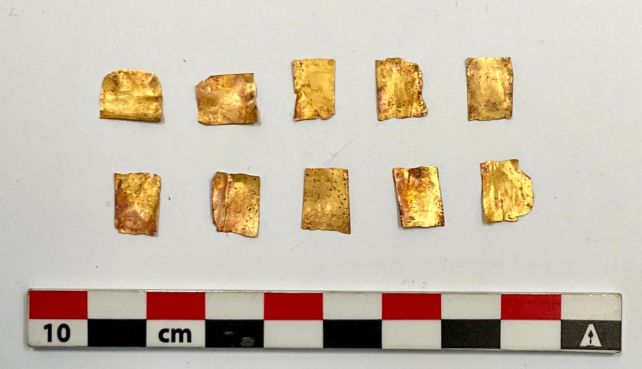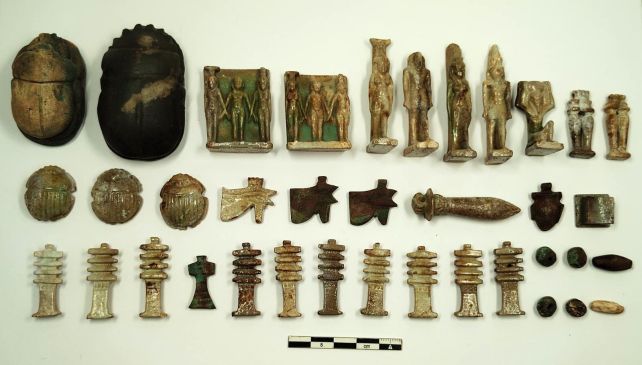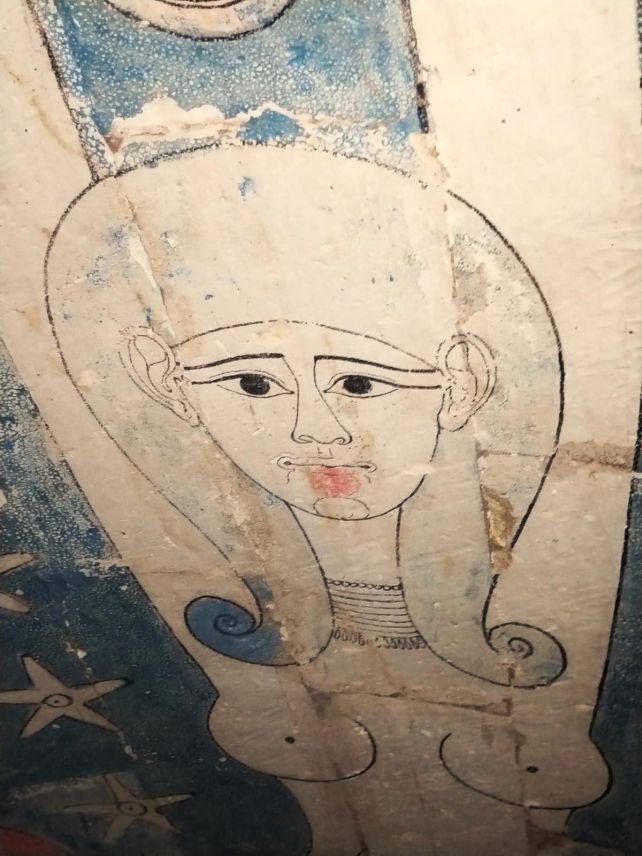Sheets of gold have been discovered gilding the tongues of more than a dozen mummified Egyptians near modern Al-Bahansa, reflecting a practice once believed to grant the dead an ability to speak in the afterlife.
Archaeologists uncovered a trove of treasures from a tomb dating back to the Ptolemaic era 305 to 30 BCE in the ancient city of Oxyrhynchus, which belonged to an individual named Wen Nefer.
The trove includes not just the 13 gold tongues, but a mummy with golden fingernails; and heart scarabs, amulets, funerary pottery, canopic jars that held the removed organs of the deceased; and walls painted with elaborate, gilded scenes depicting gods, stars, and the process of embalming.

It’s the first time many of these artifacts have been recovered from Al-Bahansa, says the team of archaeologists from the University of Barcelona in Spain and the Institute of the Ancient Middle East in Germany which made the spectacular discovery.
“These findings provide new insights into the religious practices and funerary traditions of the Ptolemaic era in Al-Bahnasa,” Mohamed Ismail Khaled, Secretary-General of the Supreme Council of Antiquities of Egypt, told Al-Ahram.
Golden tongues are rarely found in ancient Egyptian tombs, perhaps at least partially due to looting, but they offer a tantalizing glimpse into what the Egyptians deemed important to carry into the afterlife. Gold tongue amulets were placed in the mouths of the dead to ensure they were able to speak in the afterlife, as they stood before the court of Osiris.

Gold fingernail covers were used on persons of particularly high status, and archaeologists believe that they served a protective purpose – not just from the damage that may be incurred by embalming processes, but from spiritual dangers, too.
The discovery included 52 mummies dating back to the Ptolemaic era, the structure of a large tomb where 300 mummies had been interred side-by-side, and various amulets and scarabs that depicted the gods Horus, Thoth, Isis, Anubis, Osiris, Atum, and Nut.

Four limestone sarcophagi were still intact in the tomb, and in one chamber the mummified remains of a man were found with a golden tongue and a heart scarab still in their original positions. The heart scarab is particularly interesting: these were placed within the mummy wrappings over the heart of the deceased, , to aid the journey into the afterlife.
Djed pillars, Wadjet eyes, and god figurines, as well as some beads, remained in the tomb more than 2,000 years after it was sealed.
And the murals are fascinating. Nut, goddess of mothers and the cosmos, appears bare-chested against a blue sky speckled with stars. Other gods are ferried serenely in funeral boats, under similar rich, star-studded skies.

And, his face adorned with gold leaf, a man – possibly Wen Nefer himself, although it will take translation of the canopic jars to determine – undergoes embalming at the hands of Anubis, while the goddesses Isis and Nepthys, a pair often associated with funerary rites, look on.
The tomb is among the more elaborate burial chambers discovered, and we can only hope it brought comfort to the survivors of the deceased, knowing their loved ones were well provisioned for whatever might come next.
You can find more images of the finds on the Egyptian Ministry of Tourism and Antiquities’ Facebook page.









Leave a Comment